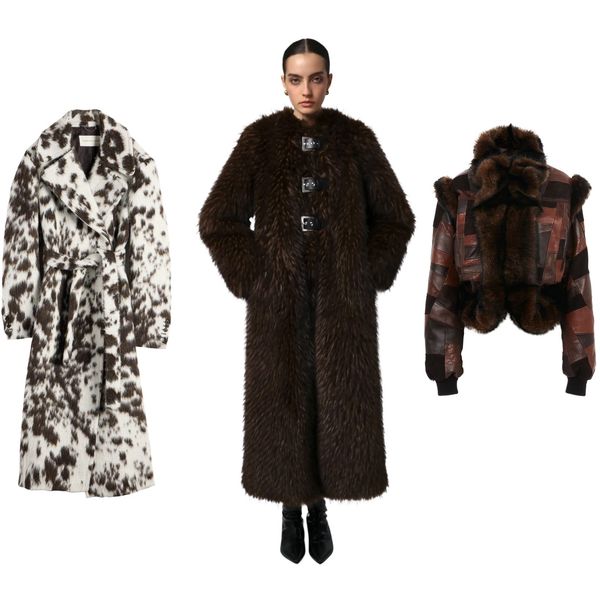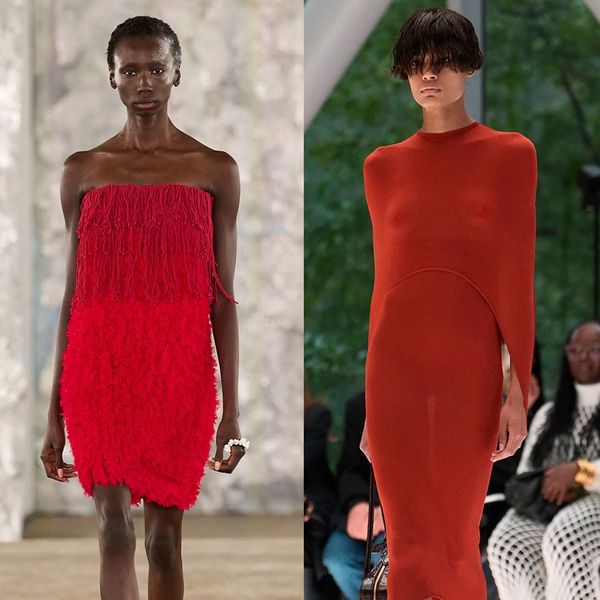“Wrong-Shoe Theory?” Meh, Your Entire Outfit Should Throw Me Off
Correct in principle, narrow in scope.
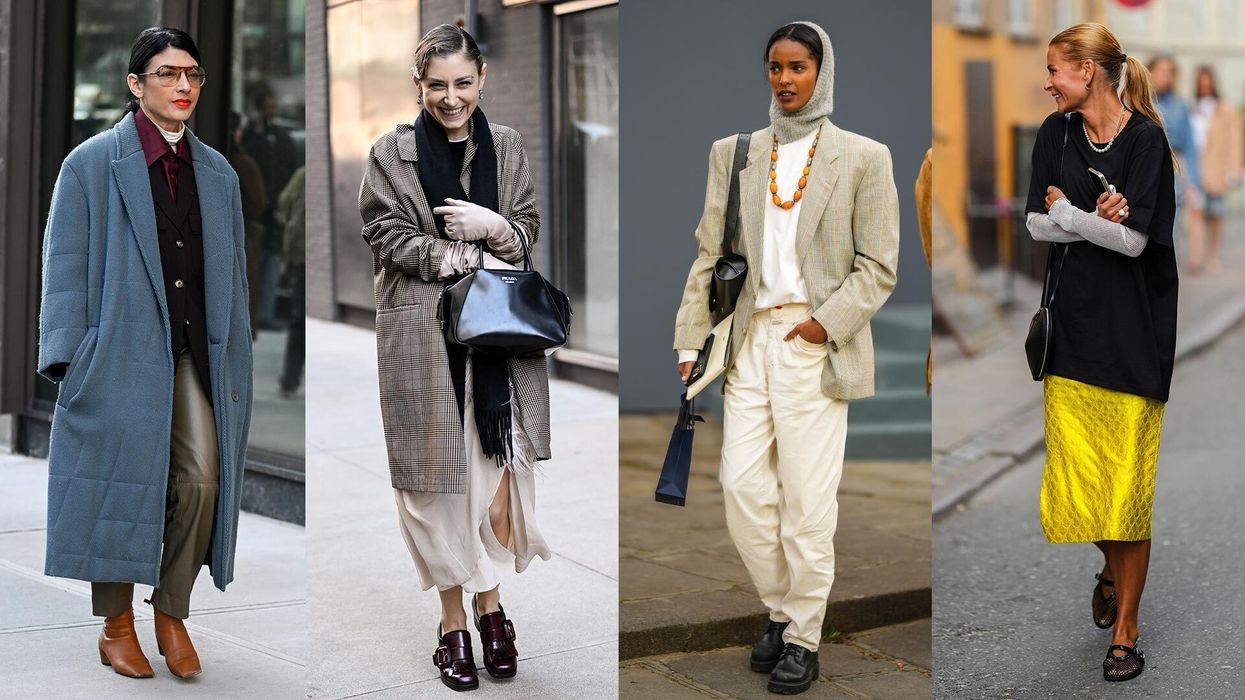
Our social editor walked into the office the other day, eyes alight. She was convinced she had found the second rendition of the Tik-Tok-famous “Wrong Shoe Theory.” Eureka! Bewitched by her own shaggy mullet, she postured, “It’s Wrong Hair Theory.” Sarah, the editor in question, favors patent leather ballet flats and a ladylike midi as much as the next Brooklynite, two items she is able to comfortably don because her Mick-Jagger-like haircut adds the perfect dollop of contrast. But I think that new take on the theory reduces her sense of style to an almost futile point; to do so would discount the other elements at play, whether that be a silver chain link necklace or a faded concert T-shirt that extends to mid-thigh (both of which are in heavy rotation). A lot of wrong comes together to make a right in this equation.
The aforementioned “Wrong Shoe Theory” came to life through the online presence of stylist Allison Bornstein, who garnered fame with her quotidian approach to the editorial world of styling clients for everyday life. The sartorial hypothesis swaps function for intention; it involves selecting a purposefully contrasting shoe to pair with the rest of your ensemble. For example, Bornstein would suggest marrying a sneaker (the catalyst for this movement) with tailored separates or a nightgown-like dress, i.e., choosing the “wrong shoe.” She’s correct, but I think you could apply this same sentiment to anything you put on.
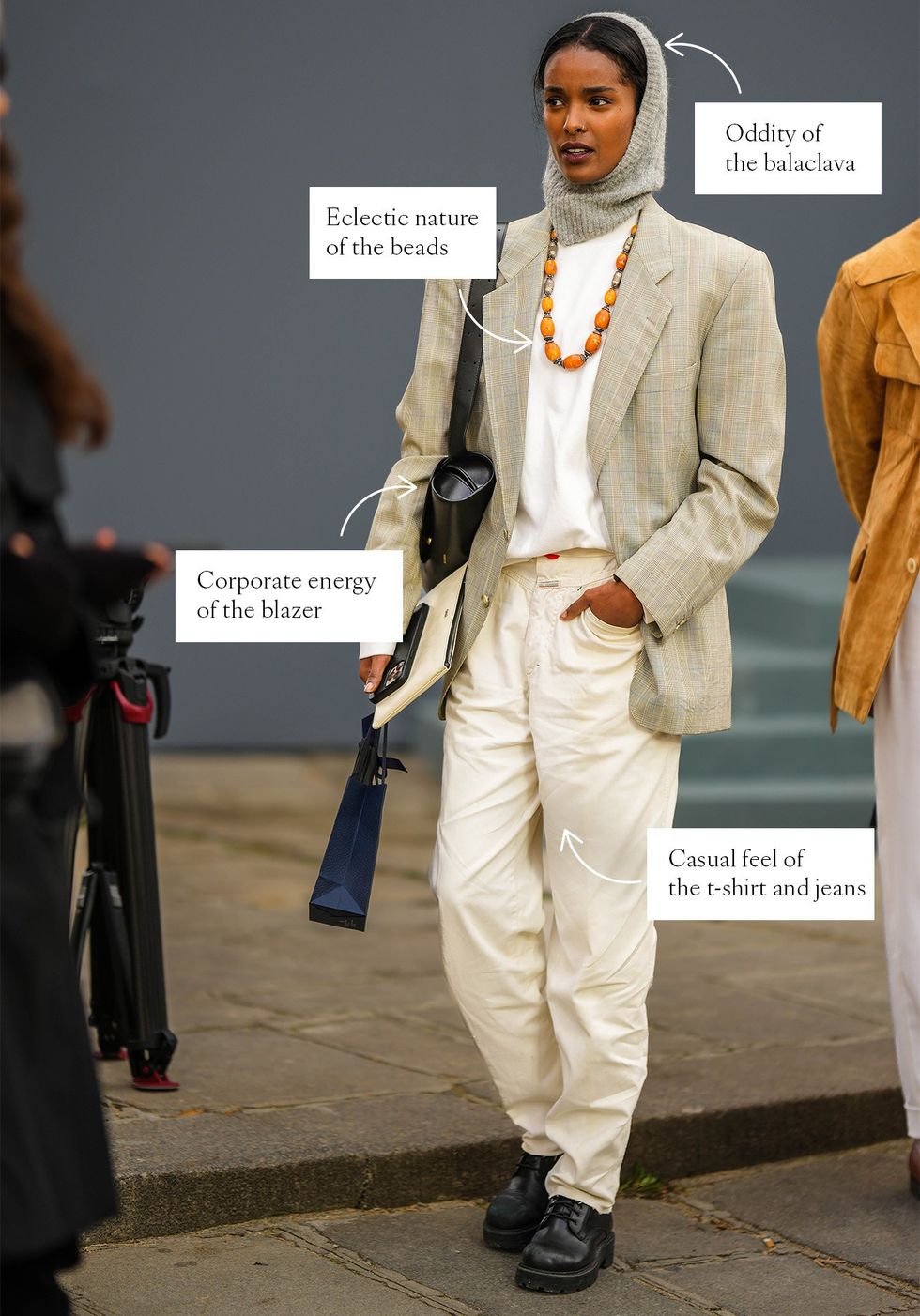
Photo: Getty Images
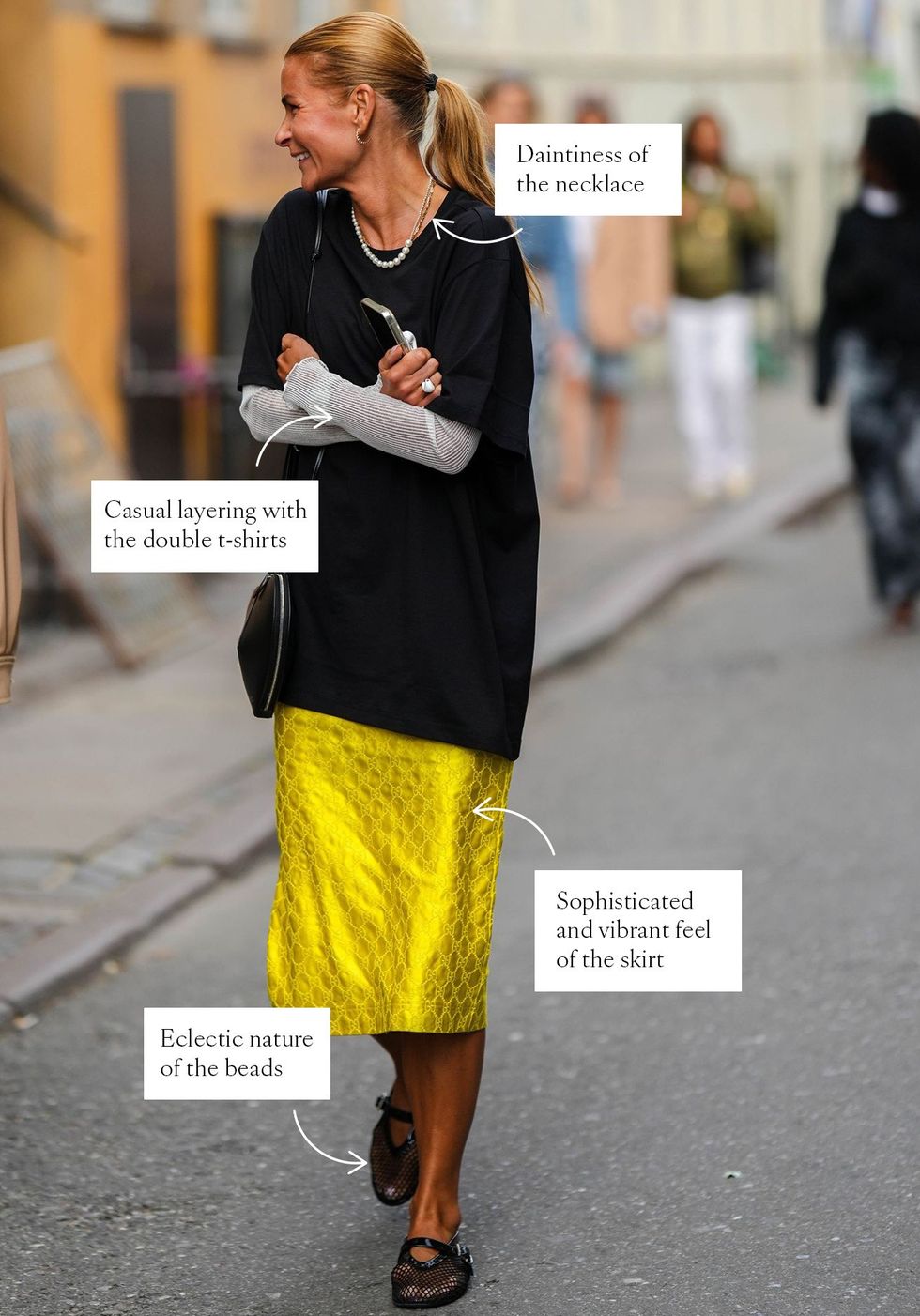
Photo: Getty Images
When I get dressed, I begin with a single item. I’ll wear a tuxedo shirt for this exercise—light pink, consigned Stella McCartney, of course. My brain then sets off on a journey to offset that item. To counter the top, I’ll perhaps add a pair of wide-leg jeans that are objectively yet purposefully too big for me (I swear they look cool, Mom). To tie everything back in, I finish it off with a pair of grey mary janes, perfect in silhouette, weird in hue. Not only can you achieve this effect with differences in color or shape, but with styling, too. Leaving said shirt untucked or wearing it oversized clashes with its historical suiting connotation. Add a weird bag, a casual knit, or a statement earring—the pairings don’t even have to be so odd. Why do you think the combination of jeans, a T-shirt, and a blazer has become the de facto uniform for so many people?
There’s also room to work with what you’ve got. I hate the manufactured concept of dressing for your body type, but I like to take into account things like the shape of my body, the texture of my hair, and the shade of my skin. I think this is more about playing with the connotations society has attached to these characteristics than anything else. Still, there’s something interesting about a very masculine silhouette on a stereotypically feminine body and vice versa. I also love to pair my wild, curly hair with sleek tailoring.
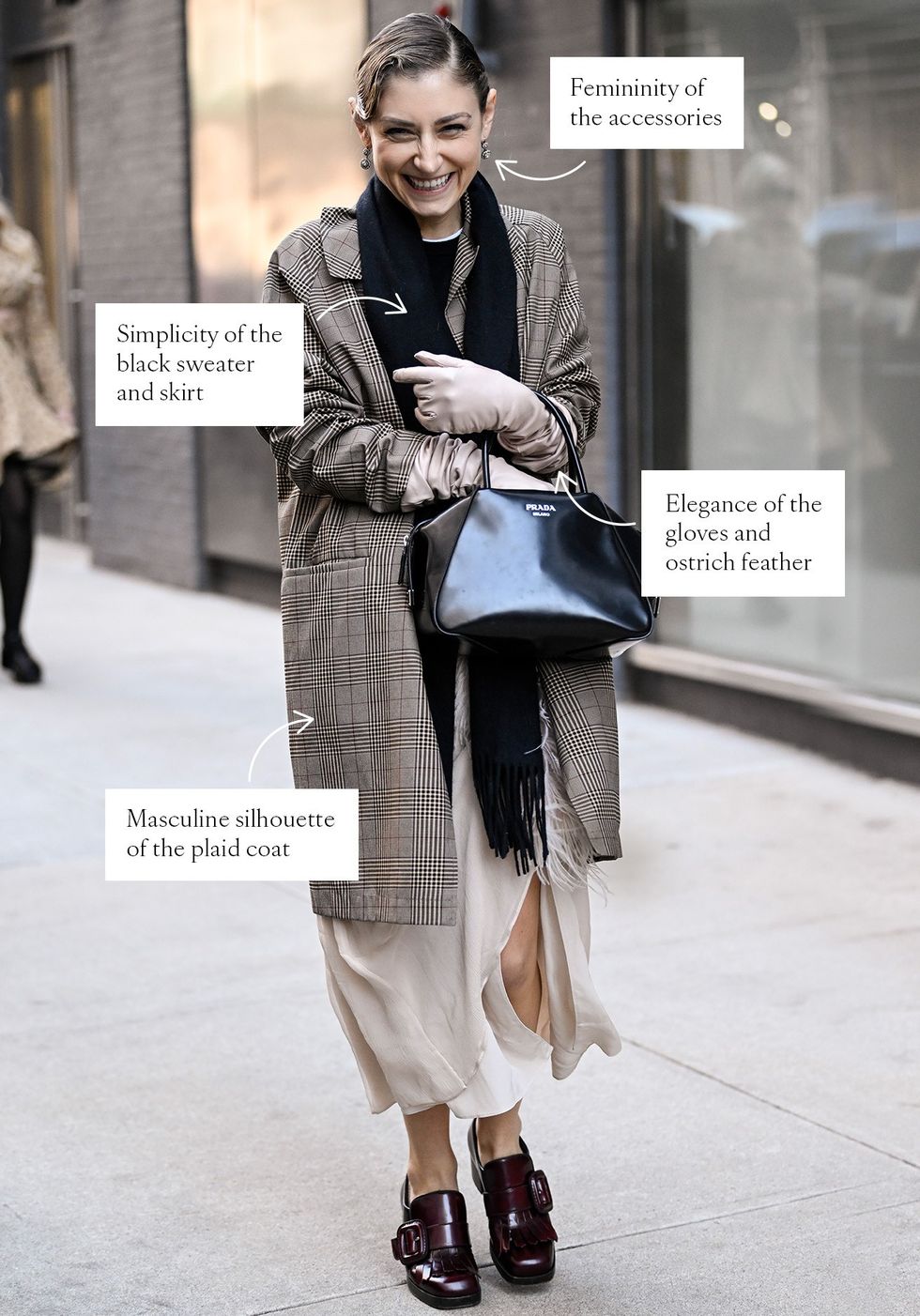
Photo: Getty Images

Photo: Getty Images
Leandra Medine built a gargantuan following on the execution of this wrong-ness by pairing supersized blouses with hot pants and evening shoes. Designers like Phoebe Philo, Martine Rose, and Grace Wales Bonner continue to exalt the concept, whether that’s through crossing athletic wear with elegance in the case of the latter two or infusing corporate tropes with a subtle dose of oddity as Miss Philo does so well. I’d be remiss not to mention my personal sartorial North Star—may I interest thee in a jaunt down Miuccia Prada’s famed ugly-pretty history? And though I think she sometimes takes it too far—but that’s just my taste; it’s still fun to look at—Bella Hadid loves to throw an unexpected pair of gas station sunglasses in with her blokette ensemble. This theory extends beyond the collective closet, as well.
I’m picturing a room on Instagram. You’ve all seen it before. The walls are white. A rounded boucle sofa boasts its pristine curvature in the middle of the floor. The perfect black and white coffee table books (Tom Ford, perhaps?) perch atop a travertine centerpiece, littered with a flickering Diptyque candle and wonky neutral vase. Pierre Jeanneret chairs, of course, flank the table. Boring! I want to be thrown off, be forced to pause and think, but in the best way possible. Mingle the bad with the good in a manner that makes me reconsider the original distinction between the two categories.
In crafting the perfect ensemble, or room for that matter, I imagine a set of scales you’re trying to balance by slowly adding blocks of different sizes to each side until it’s horizontal. (Side note: this is why I believe my math-oriented left brain is so attuned to fashion; to me, it’s all balance, symmetry, and patterns.) Too much masculinity? Add a bulbous bow. Feeling over-polished? Toss a startling print in the mix. I digress, but I honestly believe Bornstein would agree, as she often champions contrast in the quest for a great outfit. And I don’t fault her for coining this digestible tidbit of fashion advice for the masses. As I look down upon the footwear of fashionable office-goers near me, her theory endures. When I look up, so does mine.
Header Photos: Getty Images
Want more stories like this?
Apparently, Tibi & I Are On the Same Page About Cherry Red Socks
How New Yorkers Dress for 90+ Degrees at Fashion Week
Is Your Designer Bag Actually ‘Designer’? There’s An Inauthenticity Scandal Taking Over Your Wardrobe

